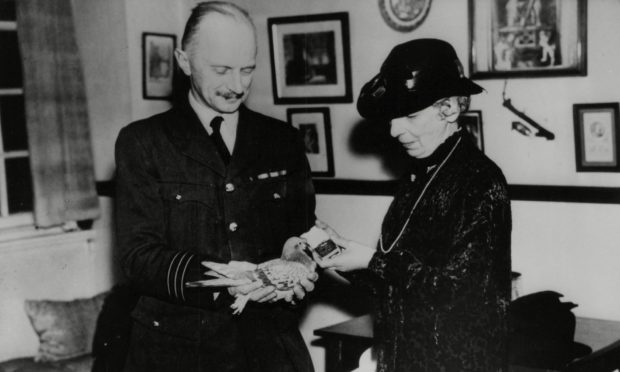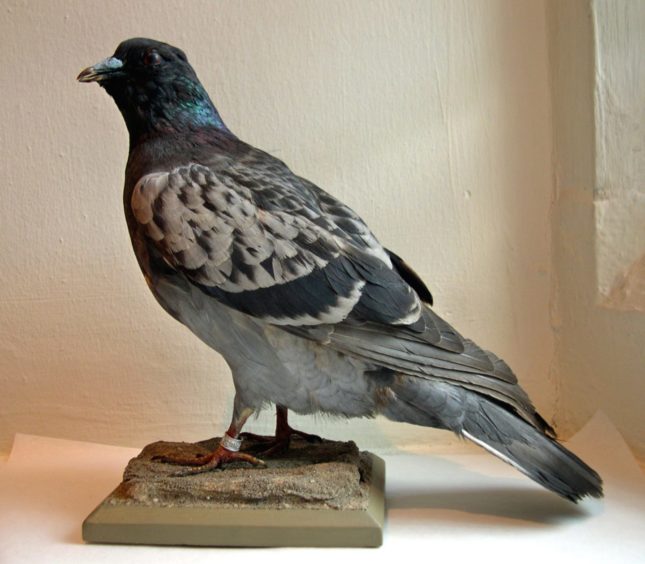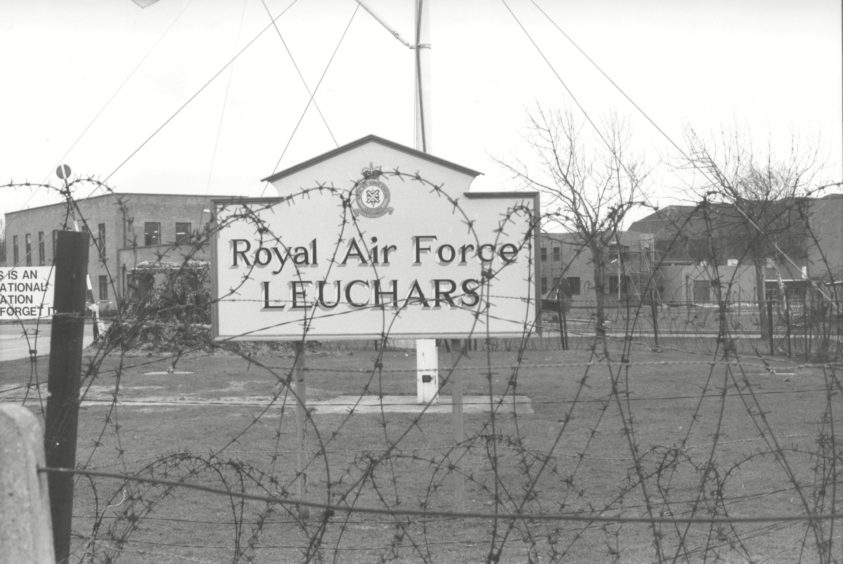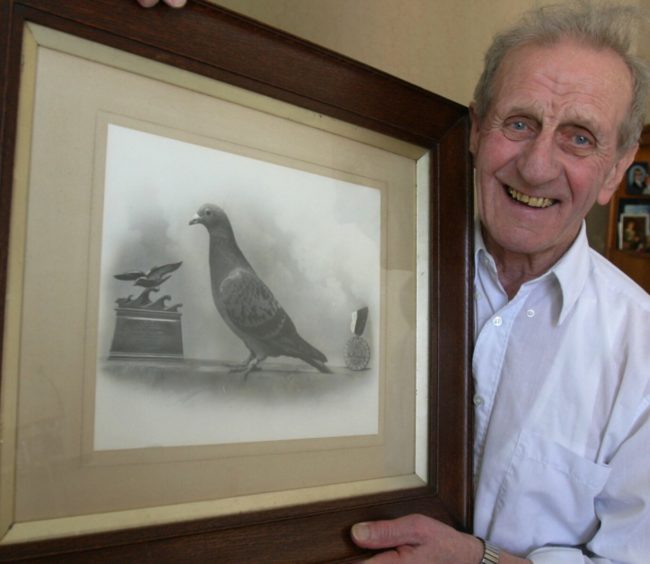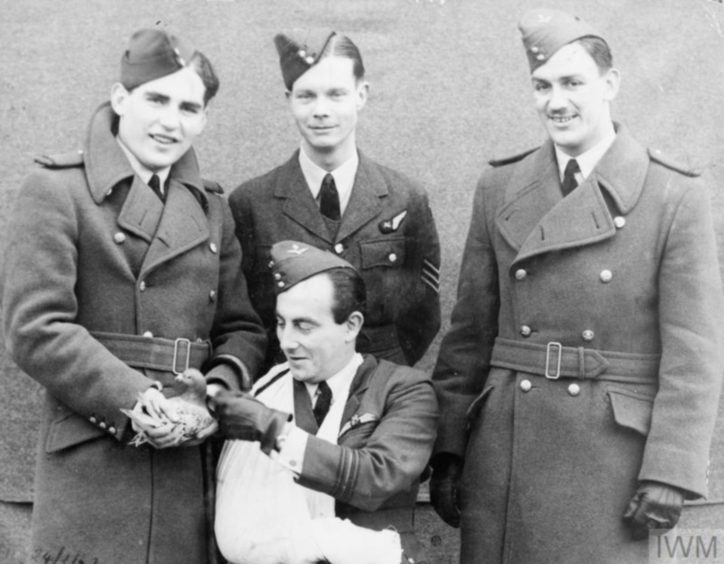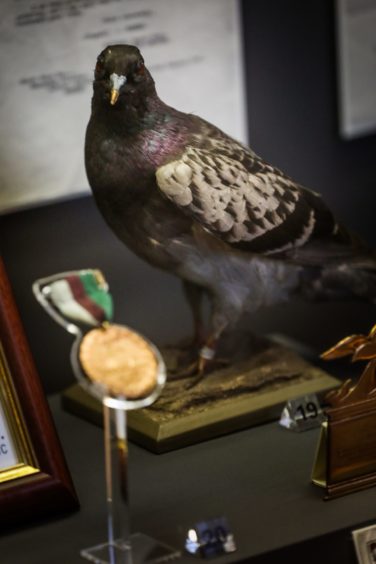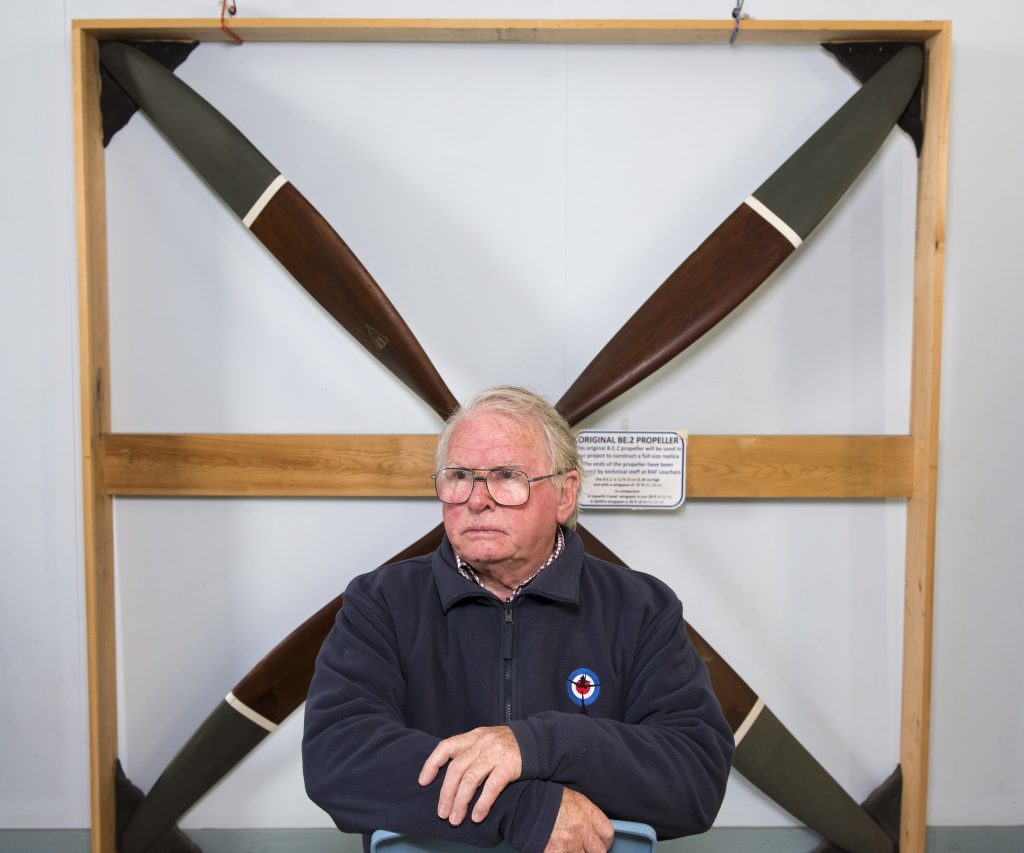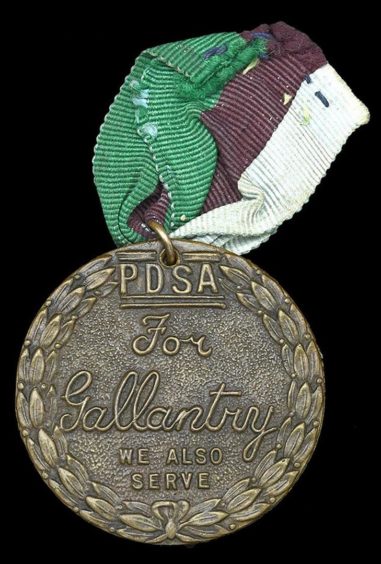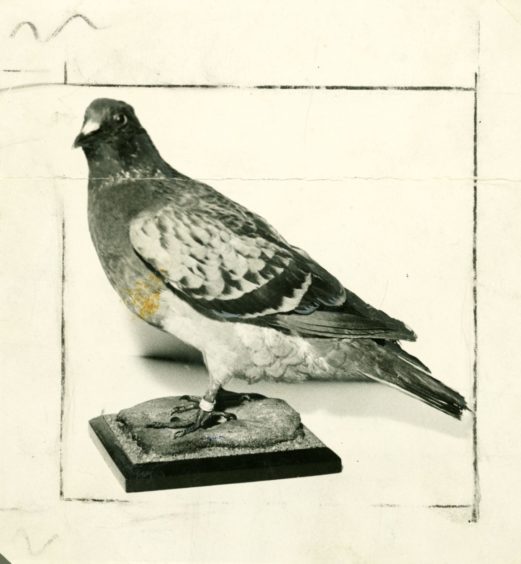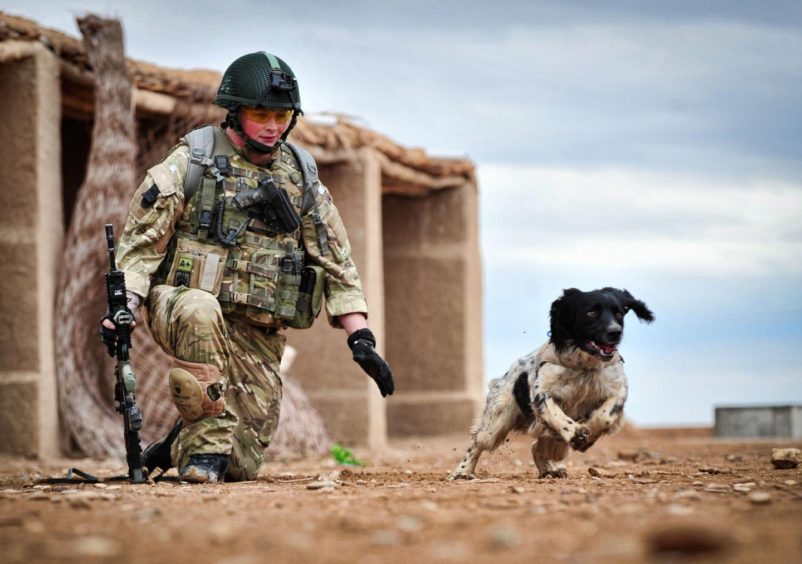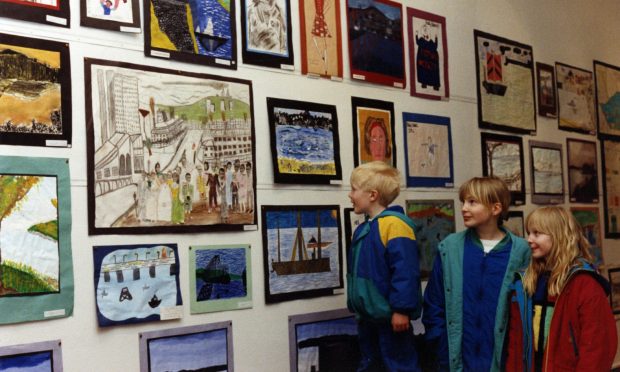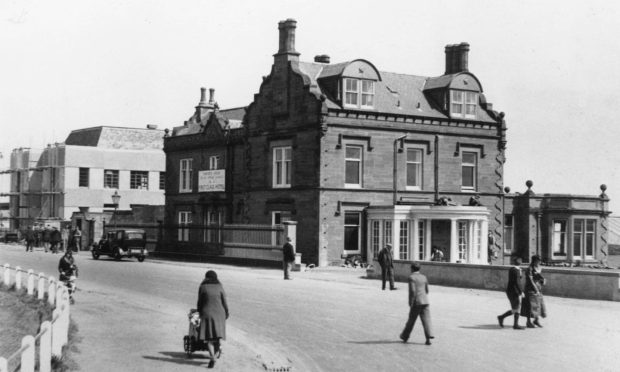Winkie was the heroic Broughty Ferry homing pigeon that saved the lives of a doomed RAF bomber crew.
The blue chequered hen bird was on loan to the RAF Pigeon Service during the Second World War.
She became the first-ever recipient of the animal equivalent of the Victoria Cross in December 1943.
Caged pigeons would often be carried in planes during wartime missions so they could fetch help if anything went wrong.
Nazi-occupied Norway
A Beaufort aircraft, based at RAF Leuchars, was returning from a mission over Nazi-occupied Norway in February 1942.
There were four airmen on board and homing pigeons Winkie and Stinkie were being carried in metal waterproof boxes.
About an hour into the flight, a sudden explosion blew apart the port engine and the Beaufort began to lose altitude.
The wireless operator tapped out an SOS distress call before the plane plunged into the icy North Sea more than 100 miles from home.
The crew escaped their sinking aircraft through the portside access hatch and managed to inflate the emergency dinghy.
Winkie escaped from the basket before the stricken men could attach a message.
Using a pencil they wrote down their last known position and attached it to the leg of the remaining pigeon.
Stinkie flew off with the message but was never seen again.
All four men had two chocolate bars and several Horlicks malted milk tablets between them.
Meanwhile the Beaufort’s call sign had been picked up at base but it was not strong enough to give more than the vaguest indication of the plane’s position.
Last hope
Winkie was now the crew’s last hope.
She was a tough little bird.
She was number one in the National Pigeon Service 1940 breed.
Although she had been on a few training flights, this was what the RAF would call her first operational flight.
Winkie made her way back 129 miles to her home loft in Long Lane after resting on an oil tanker.
Winkie’s owner George Ross found the oil-covered and bedraggled bird at the back of his loft the following morning.
Suspecting something was wrong, he phoned the RAF, giving the bird’s code number.
“One of my pigeons you were using has come back all wet and oil-stained,” he said.
“There was no message on her, but I can give you her code number.”
The squadron was able to confirm that Winkie was one of the two birds assigned to the crew the previous day but there was no message.
Since she was covered in oil and because Mr Ross said she did not like flying at night, they believed that she may have landed on the one oil tanker that had been in that area of the North Sea the previous night.
Although it had no accurate position for the downed crew, the RAF managed to calculate its position, using the time between the plane crashing and Winkie’s return, the wind direction and likely effect of the oil on her flight speed.
Rescue operation
They launched a rescue operation within 20 minutes of her return home
The crew were found by a Dutch aircrew from Leuchars.
A spare dinghy containing extra provisions and comforts was dropped.
Later in the morning a Walrus aircraft alighted and gave the crew the news they would soon be rescued.
They were eventually picked up by a rescue launch from Blyth in Northumberland.
Back in the loft in Broughty Ferry, Winkie was given a special feed and her feathers were cleaned of the oil.
Following the successful rescue, the crew held a celebration dinner in honour of Winkie’s achievement.
She was reunited for a picture with the bomber crew, one of whom still had his arm in a sling from the crash.
She ‘basked in her cage’ as she was toasted by the officers and presented with a bronze plaque with the squadron’s thanks to her courage.
The plaque was inscribed and showed a pigeon flying over the sea.
Dickin Medal
Winkie the pigeon received her PDSA Dickin Medal a year later.
The Dickin Medal was created to recognise the contribution of animals in war.
The citation read: “For delivering a message under exceptionally difficult conditions and so contributing to the rescue of an aircrew while serving with the RAF in February 1942.”
Winkie became a celebrity following the rescue and was known as the “famous Broughty Ferry pigeon”.
She was preserved after death and kept in the McManus in Dundee.
Football scores
Journalist and author Norman Watson said: “It is always wonderful to hear again of Winkie’s exploits.
“She’s long been a shimmering star in the galaxy of treasures at the McManus.
“Her remarkable story is also a reminder of how pigeons have been used for communications – from delivering half-time football scores to your own newspaper, to conveying messages from Front Line commanders during the Great War, the urgent requests for barbed wire, trench boards and, of course, reinforcements.
“On the Home Front, Dundee’s Second World War experiences are only recently beginning to emerge: the mills that were converted to shell factories, its submarine flotilla, the daring flyers of the local RNAS – one of whom had a habit of swooping below the Tay Bridge – the preparations for invasion, the secret visits by royalty and political leaders, the black out, food shortages, civil defence and air raid precautions.
“The Courier building itself was not only sandbagged.
“Its rooftop fire-watching hut incorporated heavy printing plates to protect occupants from enemy shrapnel – and was lined with old comics to keep them warm!”
Montrose honour
Dr Dan Paton from the Montrose Air Station and Heritage Centre recalled transporting Winkie when she was brought to the town for her story to be told to a wider audience.
He said: “I had the honour of personally transporting Winkie, the heroic pigeon, in a box, together with her Dickin Medal, from the McManus to Montrose Museum where I was setting up an exhibition.
“I can tell you I was nervous at the responsibility and the medal is valued at over £20,000.
“Winkie, expertly stuffed, is of course, irreplaceable.
“The idea was to make the exhibition interesting to visiting children by showing them the role of animals at war.
“Up to that time I had no idea that pigeons were still widely used in the Second World War and that RAF bombers operating over the sea carried two pigeons in specially constructed boxes to be released with a message giving their coordinates to alert rescue aircraft.
“That was the case with the Beaufort from Leuchars which crashed in the sea returning from a raid on Germany.
“Both pigeons were released but, alas, Winkie’s fellow pigeon, Stinkie, did not make it.
“Carol Sanders, a fellow member of the Montrose Air Station Heritage Centre, has a special interest in animals and has set up a display case in the museum on that theme.
“It is surprising the range and numbers of animals used in the Second World War.
“The German Army used huge numbers of horses and millions of them were killed.”
Salute to the life-saving animals
The PDSA Dickin Medal was instituted in 1943 in the United Kingdom by Maria Dickin to honour the work of animals in the Second World War and in 2014 it was awarded to all the animals involved in the First World War.
The medal is a bronze medallion, bearing the words “For Gallantry” and “We Also Serve” within a laurel wreath, on a ribbon of striped green, dark brown and pale blue.
Awarded to animals that have displayed “conspicuous gallantry or devotion to duty while serving or associated with any branch of the Armed Forces or Civil Defence Units”, it is commonly referred to as “the animals’ Victoria Cross”.
Trio of pigeons
The very first recipients of this extraordinary award were a trio of pigeons, serving with the RAF in December 1943.
Winkie, White Vision and Tyke contributed to the recovery of aircrew from ditched aircraft during the Second World War.
And let’s not forget Judy, the dog with life-saving hearing.
Judy was a ship’s dog on HMS Gnat and HMS Grasshopper, stationed on the Yangtze River during the Second World War.
Her keen ears could hear incoming aircraft, long before the human crew were able to, and she often warned them in time to see off aerial assaults.
Horses have played a very significant part in animal heroism, too.
Take Olga, who in 1947 helped control traffic and assist in rescue operations after a flying bomb explosion in Tooting.
Four houses were destroyed, with four people killed, and a sheet of glass landed right in front of the bay mare.
Frightened at first, she was calmed and then got back to her job, diverting people’s attention away from the devastation while the police got things under control.
And Simon obviously decided that the feline world had to get in on the heroics, too.
He was the ship’s cat on HMS Amethyst, and was posthumously awarded a medal for gallantry under fire, as well as disposing of many rats on the ship, in August of 1949.
Without Simon, disease would have been as big a killer as the enemy.
Springer spaniel
In 2012 springer spaniel Theo was posthumously awarded the Dickin Medal: he worked alongside the late Lance Corporal Liam Tasker, of Tayport, to seek out hidden weapons and bombs in Afghanistan’s Helmand Province.
L/Cpl Tasker, aged 26, was killed by enemy fire in March 2011 while serving with the Royal Veterinary Corps, 1st Military Working Dog Regiment, and Theo died hours later — many say of a broken heart.
